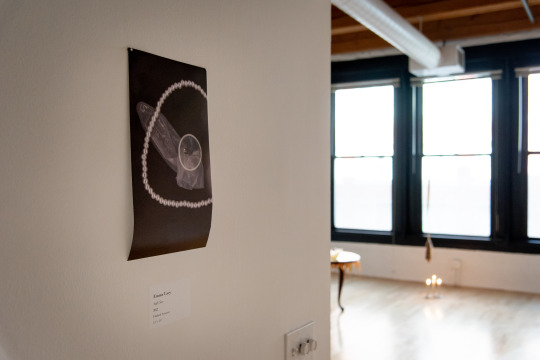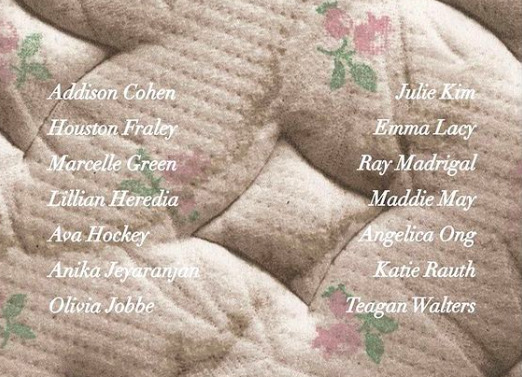#Walter Ong
Explore tagged Tumblr posts
Text
Technologies as transformative
From COML 509: Social Dynamics of Communication Technology @ Gonzaga University, Spring 2009. Thoughts on chapter 4, Writing Restructures Consciousness, from Walter Ong’s Orality and Literacy: “Technologies are not mere exterior aids but also interior transformations of consciousness, and never more than when they affect the word.” (Ong, 1982, p 82) I was with him on the first part, but at the…
#communication#communication technology#consciousness#leadership#Orality and Literacy#technology#Walter Ong
0 notes
Text
نشرة رواد: نشرة نصف شهرية تهتم بالشركات الناشئة وصناعة المنتجات الرقمية في المنطقة العربية
ما هذه المجموعة من المختارات تسألني؟ إنّها عددٌ من أعداد نشرة “صيد الشابكة” اِعرف أكثر عن النشرة هنا: ما هي نشرة “صيد الشابكة” ما مصادرها، وما غرضها؛ وما معنى الشابكة أصلًا؟! 🎣🌐هل تعرف ما هي صيد الشابكة وتطالعها بانتظام؟ اِدعم استمرارية النشرة بطرق شتى من هنا: 💲 طرق دعم نشرة صيد الشابكة. 🎣🌐 صيد الشابكة العدد #192 السلام عليكم؛ مرحبًا وبسم الله؛ بخصوص العنوان فهو ما سنبدأ به إن شاء الله. 🎣🌐 صيد…
#192#Alexander Bogdanov#Erik Hoel#Friedrich Kittler#Friedrich Nietzsche#Malling-Hansen#Mozi Money Minute#radaar.io#radaar.io/#Robert Hassan#rowaad.co#Stanisław Lem#The Intrinsic Perspective#THE PARIS REVIEW#UX Writing بالعربية#مجلة ألف: اللغة، الإعلام والمجتمع#نشرة [SC 2.4.4]#Walter Ong#[SC 2.4.4]#أحمد فارس السعود#بن عجايمية بوعبد الله#خوادجية سميحة حنان و زعموش فوزية
0 notes
Text
Bookmarking Book Art -- A to Z in Bas Relief
Oratorical Type A by Nerhol (Ryuta Iida and Yoshihisa Tanaka) Oratorical Type Z by Nerhol (Ryuta Iida and Yoshihisa Tanaka) The Japanese artists and partners Ryuta Iida and Yoshihisa Tanaka are known as NERHOL. Interviewed by Rebecca Fulleylove in the online magazine It’s Nice That, they explain the name: We met at one of Iida’s exhibition and realised we had so much in common in regards to…

View On WordPress
#Alphabet#bas relief#Book Artist#Nerhol#Orality and Literacy#Rebecca Fulleylove#Ryuta Iida#Sculpture#Visual Arts#Walter Ong#Yoshihisa Tanaka
0 notes
Note
Isn’t Walter a littlun??? Just curious bc I saw you ship Jalter :3
hi! i think he is, and so is johnny! which is the j in jalter. :) 🫶🫶
#lotf#lord of the flies#mail!!#jalter#lotf jalter#tbh i don’t see more than like#ong they share jacks at the playground#they make bracelets together#dunno#yknow#anon pls tell me u didn’t think it was jack x walter#i’d kms
8 notes
·
View notes
Text
i want to make a short comic ab teen Sam so bad 😭😭😭 its ab him + walter dealing with calvin's death and how they "moved on" spoiler: they didnt
#what remains of edith finch#sam finch#walter finch#calvin finch#wroef#ideas#indie game#im very lazy so i will prob start drawinf tomorrow#ong
13 notes
·
View notes
Text
"To speak, I have to be somehow already in communication with the mind I am to address before I start speaking. I can be in touch perhaps through past relationships, by an exchange of glances, by an understanding with a third person who has brought me and my interlocutor together, or in any of countless other ways. (Words are modifications of a more-than-verbal situation.) I have to sense something in the other’s mind to which my own utterance can relate. Human communication is never one-way. Always, it not only calls for response but is shaped in its very form and content by anticipated response."
Walter J. Ong, Orality and Literacy: The Technologizing of the Word. (Florence: Taylor & Francis Group, 1982), p. 173
2 notes
·
View notes
Text








Ghastly Elegance
2023
Documentation by Lillian Heredia
#2023#ghastly elegance#group show#Addison Cohen#Houston Fraley#Marcelle Green#Lillian Heredia#Ava Hockey#Anika Jeyaranjan#Olivia Jobbe#Julie Kim#Emma Lacy#Ray Madrigal#Maddie May#Angelica Ong#Katie Rauth#Teagan Walters#Matthew Cortez#shows
2 notes
·
View notes
Text
Little things I learned about the members of Constellation:
- Andreja feels like an outcast to the rest of the group and doesn’t feel like she’s included in their group activities.
- On the flip side, Barrett will try to invite Andreja to join him and the others in said activities and she always declines (this includes things like movie night, dancing, cooking, listening to music, board games and having drinks together)
- The members all get together to have movie night and take turns picking out the movies
- Andreja tries so hard to make jokes with Barrett but he always knows what she’s gonna say. She gets discouraged but keeps trying
- Barrett and Vlad once spent 5k of Constellation’s credits to throw a party on The Eye
- Sarah is completely against Sam bringing Cora along with him. She suggests leaving Cora with Matteo to ensure her safety. Sam becomes irritated and defensive and says Cora goes with him.
- Sam and Barrett are sports bros and love watching games together. If one of them isn’t around to watch the game, the other will record it so they can watch it together later
- Sam has terrible spelling
- Barrett is actually his last name. His first name starts with A but (as far as I know) we don’t know what the A stands for
- Sarah seems to fill a kind of motherly role of the group, checking in with Barrett after being held hostage by pirates, keeping Sam on track, watching out for Cora, reassuring Andreja, etc
- Sam and Barrett seem to cause the most trouble or make the most mistakes in the group. Barrett will try to joke and laugh it off until Sarah threatens punishment. Sam however can get grumpy and irritated when “Sarah Perfect Morgan” calls him out on it.
- Andreja has some knowledge in cooking
- Barrett does as well and will cook large meals for the group
- Cora will occasionally take some of Barrett’s stuff, usually books, without asking leading to Barrett going to Sam to get them back
- Sam seems to get easily distracted while on missions. “Sam, did you check out that thing I asked you to?” “Well I was going to but then I got caught in a goose chase-” “So did you or not?” “I was going to but then there was this thing-” “Should I just assign someone else?” “Uh that would probably be best”
- Andreja really wants to teach Cora self defense and how to fight and use a weapon. Sam is uncomfortable with it and tries to brush Andreja off. She doesn’t get the hint though
- Sam keeps an open tab at the bookstore in Akila City for Cora. She's supposed to be cut off at 100 credits but tends to overspend
- The stress Sarah is under must be obvious to the other members as multiple members of Constellation will ask if she is doing ok
- Barrett tries to get Noel to join them in space but she declines and reveals how much she is overworking herself. She then admits that she had nothing but her smarts to get her ahead in life
- Sarah is Cora’s favorite member of Constellation. Sam is her second favorite
- Not knowing where Andreja is from and her backstory drives Matteo crazy. He will vent to Sam about it who tells him to let it go and everyone is allowed their secrets
- Aja recruited Barrett into Constellation
- Sarah and Vlad recruited Andreja into Constellation
- At one point in his life, some people called Sam “Sammy”, he now detests the name and “goes by just Sam now”
- While Barrett was grieving, Aja sat with him in his room. He doesn't remember what she said but her presence was comforting and that’s what he remembers most
- Despite not having many credits himself, Sam is willing to help out those in need whether it's loaning credits to Barrett, keeping an open book tab for Cora or donating to those in need.
- Sarah is not afraid to ask Walter for money. They have some banter back and forth but Walter always signs the check
- Nadia at SSNN tries to get Sam to dig up dirt on Jacob. Despite the estranged relationship with his dad, Sam refuses
- Barrett and Sam have both been to jail at least once
- Sam and Sarah have an ongoing debate over which is the superior beer. Sarah suggests they go bar hopping one day to test their theory.
#sam coe#starfield#bethesda#starfield sam coe#cora coe#starfield cora coe#sarah morgan#starfield sarah morgan#starfield barrett#barrett#starfield andreja#andreja#constellation#starfield constellation
265 notes
·
View notes
Text
Lingthusiasm Episode 89: Connecting with oral culture
For tens of thousands of years, humans have transmitted long and intricate stories to each other, which we learned directly from witnessing other people telling them. Many of these collaboratively composed stories were among the earliest things written down when a culture encountered writing, such as the Iliad and the Odyssey, the Mwindo Epic, and Beowulf.
In this episode, your hosts Gretchen McCulloch and Lauren Gawne get enthusiastic about how writing things down changes how we feel about them. We talk about a Ted Chiang short story comparing the spread of literacy to the spread of video recording, how oral cultures around the world have preserved astronomical information about the Seven Sisters constellation for over 10,000 years, and how the field of nuclear semiotics looks to the past to try and communicate with the far future. We also talk about how "oral" vs " written" culture should perhaps be referred to as "embodied" vs "recorded" culture because signed languages are very much part of this conversation, where areas of residual orality have remained in our own lives, from proverbs to gossip to guided tours, and why memes are an extreme example of literate culture rather than extreme oral culture.
Click here for a link to this episode in your podcast player of choice or read the transcript here.
Announcements:
We've created a new and Highly Scientific™ 'Which Lingthusiasm episode are you?' quiz! Answer some very fun and fanciful questions and find out which Lingthusiasm episode most closely corresponds with your personality. If you're not sure where to start with our back catalogue, or you want to get a friend started on Lingthusiasm, this is the perfect place to start. Take the quiz here!
Here are the links mentioned in the episode:
The 'Which Lingthusiasm episode are you?' quiz
'The Truth of Fact, the Truth of Feeling' by Ted Chiang
'The Truth of Fact, the Truth of Feeling by Ted Chiang — Subterranean Press' blog post by Devon Zeugel
'Orality and Literacy' by Walter J. Ong
Wikipedia entry for Grimms' Fairytales
Wikipedia entry for Milman Parry
Wikipedia entry for Homeric Question
Wikipedia entry for Mwindo Epic
Encyclopedia.com entry for Mwindo
Crash Course episode 'The Mwindo Epic'
'The world’s oldest story? Astronomers say global myths about ‘seven sisters’ stars may reach back 100,000 years' by Ray Norris on The Conversation
'The Pleiades – or 7 Sisters – known around the world' by Bruce McClure on EarthSky
Wikipedia entry for Nuclear Semiotics
99% Invisible episode 'Ten Thousand Years'
Wikipedia entry for Aesops Fables
'How Inuit Parents Teach Their Kinds to Control Their Anger' by Michaeleen Doucleff and Jane Greenhalgh for NPR
Deafness and Orality: An Electronic Conversation
Wikipedia entry for The Tale of Genji
Bea Wolf, a middle-grade graphic novel retelling of Beowulf, by Zach Weinersmith
Lingthusiasm episodes mentioned:
'Writing is a technology'
'Arrival of the linguists'
How translators approach a text'
You can listen to this episode via Lingthusiasm.com, Soundcloud, RSS, Apple Podcasts/iTunes, Spotify, YouTube, or wherever you get your podcasts. You can also download an mp3 via the Soundcloud page for offline listening.
To receive an email whenever a new episode drops, sign up for the Lingthusiasm mailing list.
You can help keep Lingthusiasm ad-free, get access to bonus content, and more perks by supporting us on Patreon.
Lingthusiasm is on Bluesky, Twitter, Instagram, Facebook, Mastodon, and Tumblr. Email us at contact [at] lingthusiasm [dot] com
Gretchen is on Bluesky as @GretchenMcC and blogs at All Things Linguistic.
Lauren is on Bluesky as @superlinguo and blogs at Superlinguo.
Lingthusiasm is created by Gretchen McCulloch and Lauren Gawne. Our senior producer is Claire Gawne, our production editor is Sarah Dopierala, our production assistant is Martha Tsutsui Billins, and our editorial assistant is Jon Kruk. Our music is ‘Ancient City’ by The Triangles.
#language#linguistics#lingthusiasm#episodes#podcast#podcasts#episode 89#orality#literacy#fairy tales#myths#epics#oral culture#Ted Chiang#Homer#Mwindo#nuclear semiotics#ray cats#quiz#personality quiz#SoundCloud
90 notes
·
View notes
Text
Art dump
don't know how many of these I'll show but like I have so much art stuff from last year to this year that I never showed because either their stupid, cringe, or me practically on 0% of sleep but I guess I'll sacrifice my sanity since I'm kinda on a block rn lol
Btw this is like:

6-7 sketch books
Alot of them are filled with Wish content so yeah. Anyways here you guys go:
We'll start with this one:

°•○☆○☆○☆○☆○☆○☆○☆○☆○☆○•°




























Oh shit this ain't even all of it wtf 😭😭
ANYWAYS
I wanted to show you guys this one first cause this one had a lot of scrap book sessions and me practicing with water colors! Btw I haven't used it in a while but I probably should pic it up again.
Also the Ceilo water colors was one I messed up on and I was too sad on uploading it but hey guess it's here now.
Also I was going to do Hedous in Water Colors but I didn't know his color pallet. I was going to show it here but it got cut off 🫡🫡🫡
And ong you guys see my characters going through...an Era 😭😭😭
Thank God I landed on smth consistent.
THE WALTER WHITE ONE AND HARRY POTTER ONE WAS A IMAGE I SAW ON PINTEREST AND IT WAS SO FUNNY I WAS INSPIRED TO EXPAND UPON IT
AND THE BOB THE BUILDER ONE WAS A JOKE. AGAIN I SAW SMTH LIKE IT ON PINTEREST AND HAD TO DRAW IT YKYK 😭😭😭🥰🥰🥰👅👅👅
Anyways
@signed-sapphire @sewerpalette @spectator-zee @pennysucks @oh-shtars @rascalentertainments @tumblingdownthefoxden @uva124 @chillwildwave
#artwork#art#art tag#disney wish#wish 2023#the kingdom of roses and thorns#princess asha#king magnifico#wish asha#artists on tumblr#my art#illustration#art process#art dump#I'm not going insane <3#star wish
30 notes
·
View notes
Quote
Among those I heard him talk about most often were Bertrand Russell, George Orwell, G.K. Chesterton, George Bernard Shaw, Alfred North Whitehead, Sigmund Freud, Karl Marx, Philippe Aries, Jacques Ellul, Rudolph Arnheim, Norbert Elias, Robert Maynard Hutchins, Christopher Lasch, Walter Ong, Eric Havelock, Lewis Mumford, Harold Innis, and of course Marshall McLuhan, whom Postman met in the 1950s, before anyone had ever heard of the Canadian English professor who would write "Understanding Media" (1964). McLuhan always regretted that he had not founded a Ph.D. program like Postman's, and until the rediscovery of McLuhan by young people of the Internet age, that program helped keep interest in his ideas alive. "The medium is the message," McLuhan's most famous line, is not an easy idea to grasp. It just looks that way.
Neil Postman: A civilized man in a century of barbarism
7 notes
·
View notes
Text
“How could you ever call back to mind what you had so laboriously worked out? The only answer is: Think memorable thoughts." --Walter Ong, Orality and Literacy
3 notes
·
View notes
Text
Odds & Ends: May 26, 2023
“The Purple Testament” episode of The Twilight Zone. Wednesday’s episode of the podcast about the 11th Airborne Division during WWII led me into reading this interesting article about the combat experience of Rod Serling, creator of The Twilight Zone, which then led me to watching an episode of the classic television show I hadn’t watched before. Serling was a member of the 11th Airborne Division’s 511th Parachute Infantry Regiment, which lost a third of its ranks during its fighting in the Pacific. Serling, who earned the Bronze Star and Purple Heart, was haunted by his harrowing experiences after the war, and these ghosts served as indirect and direct inspiration for episodes of The Twilight Zone. As an example of the latter, the article referenced “The Purple Testament” (Season 1, Episode 19), which depicts an officer fighting in the Philippines who has gained the ability to predict soldiers’ deaths by looking into their faces. It’s a pretty good episode — especially once you know about Serling’s personal connection to the story’s backdrop. Fighting for Life: Contest, Sexuality, and Consciousness by Walter J. Ong. Walter J. Ong was a Jesuit priest who spent his career as an academic studying and writing about how humanity’s transition from an oral to written culture changed human consciousness. In Fighting for Life, he looks at how competition — particularly male competition — shaped that process. He focuses on how the male drive for competition influenced philosophers and academics from ancient Greece through the Enlightenment to create a learning environment that was agonistic. Ong argues that after the Romantic Era, education became more feminized, and an emphasis on cooperation rather than competition began to pervade classrooms. “Experiences Won’t Make You Happier Than Possessions.” You’ve probably heard that research has found that spending your money on experiences rather than things will lead to greater happiness. We like this kind of scientific finding; it seems “right.” But as the author of this piece convincingly explains, that finding is based on the particular (and potentially misleading) way studies on the subject have been framed, and when you look at the question from other angles, it’s not so clear that experiences are superior to possessions in the happiness-generating department. Some people may get more enjoyment from the former than the latter, and vice versa. So the conclusion is to not make your spending decisions based on pop psychology, but what you personally enjoy. Nutricost Creatine Monohydrate Powder. We’ve written about the benefits of creatine. Besides aiding in muscle and strength building, it can also boost cognition. It’s one of the most research-vetted supplements out there and has been shown to be effective and safe. It’s also pretty dang cheap. You don’t need any of those proprietary blend creatine powders; plain old, straight-up creatine monohydrate is perfectly effective. I’ve been using this creatine monohydrate powder from Nutricost for awhile now. It’s a good price and gets the job done. Quote of the Week The dead are living all around us, watching with eager anticipation how we will handle the opportunities they left in our hands when they died. —Theodore C. Speers The post Odds & Ends: May 26, 2023 appeared first on The Art of Manliness. http://dlvr.it/SpghpN
2 notes
·
View notes
Text
Activity #1 (COMMUNICATIONS)
These are all of the things that I have learned from the readings that were given to the class.
The first that I have learned would be that, in communication, there are two prevalent cultures which are the Oral culture and the Written culture.
Societies that primarily have an oral culture have many core differences from societies that have a chirographic (writing) culture that it is quite difficult for a person from one culture to truly understand someone from the other. Firstly, one of the main difference in oral culture from a writing one is that it is aligned to the "human lifeworld" (the world as a person would experience daily) while a culture that has been exposed to writing can be seen as more distanced to said "lifeworld" since writing has an emphasis on a neutral stance on the representations of humanity.

Another difference of the cultures would be their social standings. Oral Cultures tend to be traditionalist/conservative that it is due the fact that, since the preservation of knowledge is key to their survival, they rely on more older folks as a leader since they have accumulated more knowledge. Meanwhile, in writing cultures, though it can be conservative at times, it is less reliant on older people for guidance since any knowledge can be jotted down in a sheet of paper and that results in a society that has an emphasis on discovery.

Though they have many differences, there are also many similarities between the cultures. The biggest similarities of the two cultures would be that, how they communicate is still the same with the speaker spreading a message to the receiver, who then sends feedback to the speaker. Another similarity would be that both cultures uses their primary tool of communication as a way to express themselves through stories, proverbs, etc.


The second would be Walter Ong's intersubjectivity of communication where it states that communication is not one sided, like that of the model Aristotle had, and that, for every message received by an audience, there also is a response (feedback).

This also helps in how communication is different from media since many would think that they are similar in many aspects but the key distinction between the two is that, while communication is focus on a message and a response, media is about the dissemination of a message or information with little regard to a response.

And lastly, I learned how 'media' model of communication show chirographic conditioning, where there is a shift from an oral culture of communication to a written one. It illustrates this through how a culture that has shifted would be in favor of a linear thinking instead of a repetition of thinking found in oral cultures since media tends to be one-sided.
0 notes
Text
accumulated book list; (unowned) 𓇢𓆸

- [ ] a personal matter by Kenzaburo Oe
- [ ] shame in the blood by Tetsuo Miura
- [ ] nw by Zadie Smith
- [ ] tender by Ariana Harwicz
- [ ] shantarm by Gregory David Roberts
- [ ] second place by Rachel Cus
- [ ] bluets by Maggie Nelson
- [ ] devotions by Mary Oliver
- [ ] black swans by Eve Babitz
- [ ] perfume by Patrick Suskind
- [ ] a certain hunger by Chelsea G. Summers
- [ l + r x2 ] time is a mother by Ocean Vuong
- [ ] assembly by Natasha Brown
- [ ] butter by Asako Yuzuki
- [ ] carmilla by Sheridan Le Fanu
- [ ] boulder by Eva Baltasar
- [ ] permafrost by Eva Baltasar
- [ ] discipline and punishment by Michel Foucault
- [ ] black reconstruction by W.E.B Dubiou
- [ ] a poets notebook by Paul Valery
- [ ] die my love by Ariana Harwicz
- [ ] swimming in the dark by Tomasz Jedrowski
- [ ] timecode of a face by Ruth Ozeki
- [ ] into the wild by Jon Krakauer
- [ ] the wind up bird chronicle by Murakami
- [ ] theory of the lyric by Jonathan Culler
- [ ] orality and literacy by Walter J. Ong
- [ ] the soundscape by Murray Schafer
- [ ] listening and voice by Don Idhe
- [ ] the poetics of french verse by Clive Scott
- [ ] the poetics of space by Gaston Bacherlard
- [ ] housekeeping by Marilyn Robinson
- [ ] the white book by Han Kang
- [ ] americanah by Chimamanda Ngozi Adichie
- [ ] poor deer by Claire Oshetsky
- [ ] pushout by Monique W. Morris
- [ ] foggy mountain breakdown by Sharyn Mccrumb
- [ list two ] ☼
bought = b | loaned = l , read = x | reading = …
1 note
·
View note
Text
[ID: My earliest encounters with people who could neither read nor write (and nor, in this case, speak English) were in the Pacific Islands where I lived and worked for more than two decades. As a geologist, my research took me to some of the remotest corners of the Pacific region, where my self-belief as a conventional scientist gradually eroded and was replaced with an appreciation of other worldviews equally as valid as that with which I had been inculcated. I also became disabused of the belief — held by most Western-educated literate people — that oral it is inferior to literacy. As carefully explained by Walter Ong in his classic book Orality and Literacy: The Technologizing of the Word (1982), not only has literacy transformed human consciousness, shifting it from sound-focused to sight-focused, but is has also ‘weaken[ed] the mind’. For, as Ong wrote: ‘Those who use writing will become forgetful, relying on an external resource for what they lack in internal resources.’ Plato’s Socrates noted the same thing, arguing that writing ‘destroys memory’, something that sustained oral societies in every part of the inhabited world for tens of thousands of years. /end ID]

Patrick Nunn, from "The stories of oral societies aren't "myths"; they're records", pub. Aeon
1K notes
·
View notes